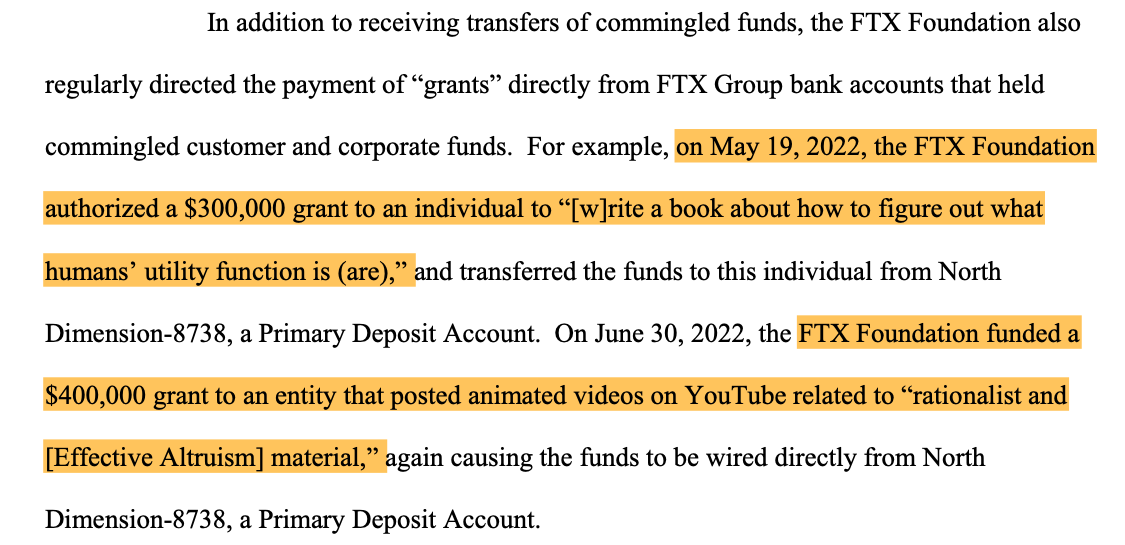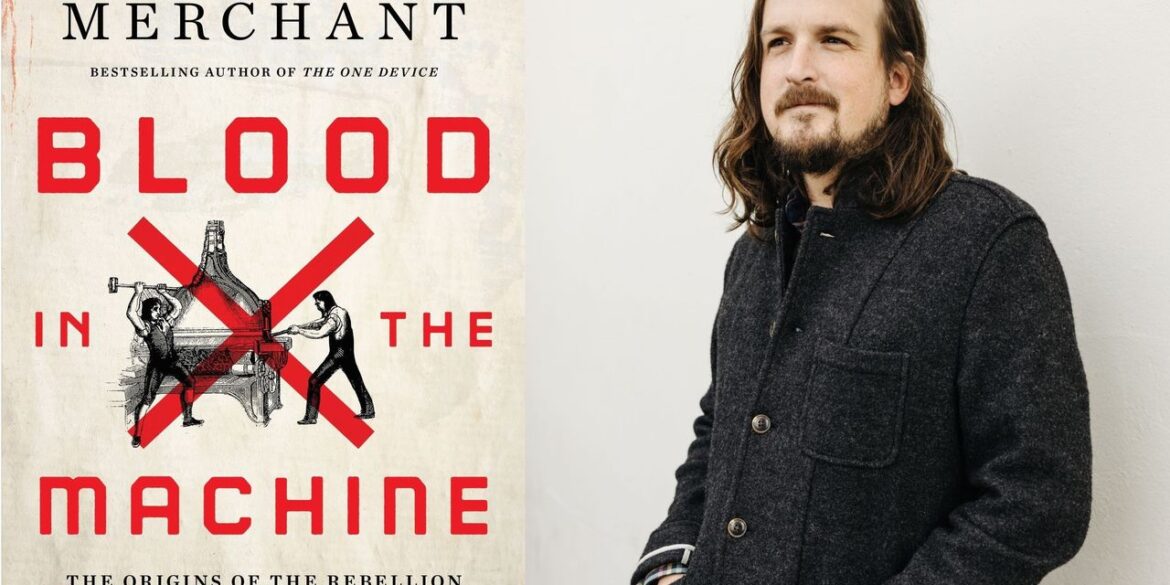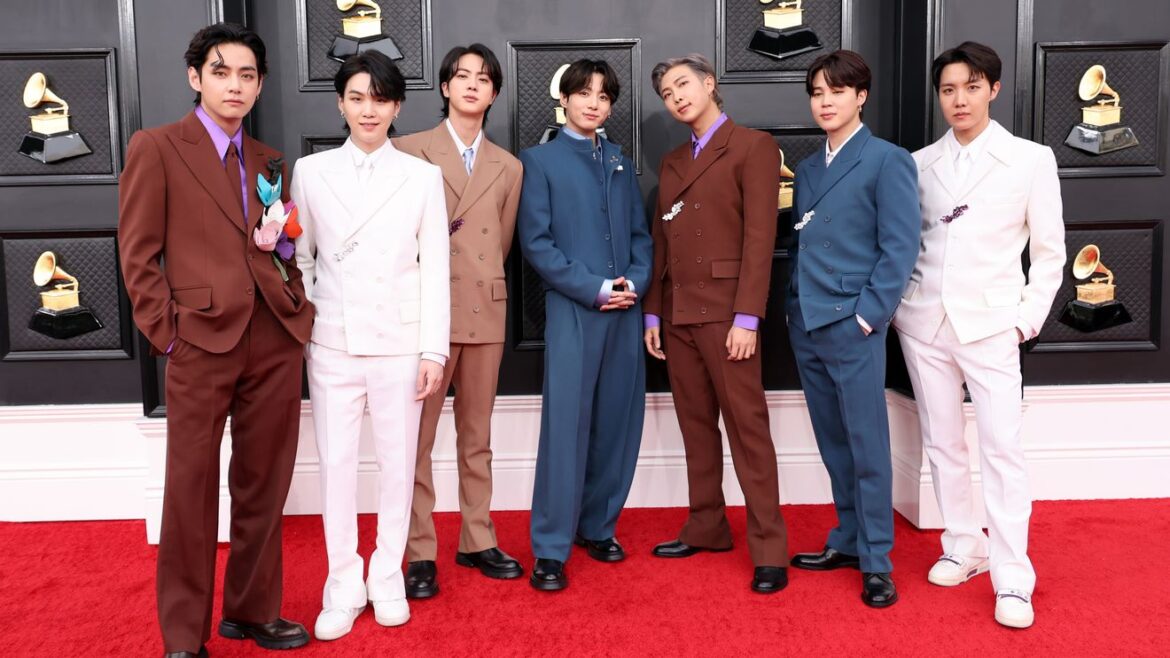
“When one friend made a fuss over wanting to fly business class, I threatened to cancel completely.”
Source link
book
Can a Luddite rebellion rise against Big Tech? A new book argues it can.
The term “Luddite” has been used as a pejorative term for centuries, as a way to suggest someone is fearful or ignorant of technology.
Brian Merchant wants that to end. He would like to see workers instead proudly wear the term today as they fight the kind of forces that turned English textile workers in the late 1700s and early 1800s into Luddites, who attacked factories and smashed machines that were destroying their jobs.
“It perpetually needs to be contested, this idea that a Luddite is somebody who’s dumb or backward-looking. That sort of assumption benefits the people who make the most money making technology products,” the Los Angeles Times columnist and author told MarketWatch. “So it’s in the interests of a lot of people to keep the idea alive that to push back against [technology’s effects] is sort of automatically counter to progress or a bad idea or makes you dumb.”
Merchant’s new book, “Blood in the Machine: The Origins of the Rebellion against Big Tech,” is available today, and it re-examines the history of the Luddites’ rebellion against the forces of the Industrial Revolution. Merchant also compares that story with current efforts to resist technological changes to workers’ lives from the effects of Big Tech and artificial intelligence.
MarketWatch recently spoke with Merchant about the book, how the two eras are similar and different, and what a worker rebellion in the AI era could look like. The interview has been edited for clarity and length.
MarketWatch: Your book describes the Luddites as workers who destroyed machinery that was being used by factory owners to automate their jobs in the hands of children and unskilled workers, and had the support of a majority of English people, eventually leading to changes in the law. Why is that not the story that has largely been told in the centuries since?
Merchant: The saying goes that the victors write the history books, and that’s very much true in the Luddites’ case. The [British government] kind of had an old-school propaganda campaign to paint the Luddites as backward from the very beginning, and they deployed the military to occupy the areas where the Luddites were active. So they also used a much more blunt tool to just crush the Luddites outright and to send this message that if you oppose technology, not only will we think you’re dumb and write that in royal proclamations, but we will also crush your movements physically by arming factory owners, by supplying military garrisons to protect factories and put them at the service of the entrepreneurs of the day. … Now the assumption is, if you’re a Luddite and you oppose technology, you’re doomed because technology inevitably advances and inevitably progresses and to go against it is foolish because the forces of technology are so powerful. And that’s not actually the full story.
The Luddites had a saying that showed up in the letters that they would write that they were ‘opposed to the machinery hurtful to commonality.’ and that’s really the key thing — it wasn’t about opposing technological development, full stop, it was about protesting the parts that were particularly exploitative, that were being used to degrade wages, to put them out of work, to allow the entrepreneurs to gain power and break the power of the workers.
MW: You write that what the Luddites faced is analogous to Big Tech and the current state of work, even though you were writing it before generative artificial intelligence arrived and threatened more jobs. Where do you see the strongest parallels, and where does generative AI fit in?
Merchant: You look at the past few decades, productivity has gone up and up and up, corporate profits and CEO pay have gone up and up and up, and yet worker pay has been stagnant. So it’s a great example of exactly the kind of thing that the Luddites were protesting, because a big part of that story is automation machinery, robotics and factories, software automation, things that are making workers more productive, but they’re just not seeing the benefits, and that’s what we stand to see more in this new AI era. If anything it’s going to serve the interests of the folks who either can afford the tools and make the decision to deploy them or companies selling AI outright.
I think that we’re in another moment that very much resembles the onset of the Industrial Revolution in the sense that we have a lot of people with access to tools that could be very disruptive if they can get the capital to put behind it, and there’s a lot of norms and standards and people with livelihoods that are suddenly feeling very vulnerable, especially creative workers, writers, artists, illustrators, stuff that can now kind of be done with generative AI. It doesn’t have to be done well, it doesn’t have to be done better than the human, it just has to be done well enough to meet the satisfaction of the boss or somebody who would be needing that service.
MW: The Luddites were crushed by the government, but there were laws that sprung up from that period to protect workers. As the push for legislation to regulate AI begins, however, little of it seems to be focused on protecting workers in a similar fashion, especially in the wake of OpenAI’s ChatGPT.
Merchant: I think part of that is intentional. OpenAI and its ilk from the beginning have pushed this narrative that AI is all-powerful, so please regulate us so it’s developed safely. But they’ve moved the Overton window, or are trying to, so far down the line where they’re trying to consider existential crises — like the biggest threat is that AI is going to become Skynet, not that it’s going to be incredibly disruptive in the workplace. Meanwhile, they’re trying to do the very mundane thing of selling enterprise tech contracts because that’s where they’re going to make all their money. They’re up to a billion in revenues and that’s where it’s coming from.
On the one hand, it’s a huge oversight that we’re not looking at the labor implications here by and large, with the caveat that on the state level there are some interesting things being done. California has a bill put forward that would do things like help actors prevent AI replicas of them being used in contracts, giving them a little more power. That does kind of feel like nibbling around the edges a little bit, but it’s a positive development. But especially federally there’s a totally lackluster or even almost kind of lack entirely of attention given to the labor implications. And I would say that that’s not surprising because that’s been the case for the last at least 10 or 20 years, having the keys handed to Silicon Valley and trusting them to build products and build platforms that are engines for the economy and are ultimately good for most people.
““You wouldn’t expect Americans to confront a technology, or even the use of an exploitative technology, head-on in this way and say, ‘no.’ And so that is kind of empowering a lot of people.” ”
— Brian Merchant, on Hollywood writers and actors fighting against artificial intelligence
MW: While I see the comparisons between the two periods, there are some stark differences, starting with the fact that about 80% of England was involved in the textile industry in some fashion in the Luddites’ era, but now we have a wide variety of industries at different maturity stages — Amazon
AMZN,
has seen some early organizing efforts that you write about, Hollywood is heavily unionized and just went on strike to fight AI, while industries like gig work are not organized at all. How do workers find common ground to work together across industries?
Merchant: It’s a real consideration and it’s a hard question. One thing that has happened to our economy at large over the last couple of decades now as inequality has widened, as housing prices have gone up, as conditions have sort of worsened for the middle class, I think more people are starting to feel what old-school folks would call class consciousness. There’s a lot of millennials who are now sort of coming to grips with the fact that, as things stand, they are never going to be able to afford a home despite playing by the rules. There are a lot of industries that are very precarious and even if you have a good job, there’s a sense that it could fall away. So I think at a base level, there’s a familiarity in a way that, maybe 20 or 30 years ago, wasn’t the case — the overworked UPS
UPS,
driver can relate to the underpaid journalist, who can relate to the freelance artist whose work is being gobbled up by [generative AI program] Midjourney, who can relate to the coder who’s gotten fired from his second Silicon Valley company within the space of 18 months.
I think it’s really interesting that we’re seeing such stark protests against AI or the use of AI in the workplace from WGA to SAG, those artists. That feels, at least within my lifetime, like a new thing — you wouldn’t expect Americans to confront a technology, or even the use of an exploitative technology, head-on in this way and say, ‘no.’ And so that is kind of empowering a lot of people. And there is overlap between a lot of these issues. One of the big things in the auto workers strike is that it requires less labor to make EVs, so that’s a point of contention. How do you deal with that? How do you deal with what is basically automation on the factory line? So there is a lot of overlap, but I think it’s easier for people to kind of see solidarity with each other. At the same time, just look at Silicon Valley. These tech companies are beyond rich, beyond powerful. The people that run them or that founded them are among the richest in human history, and some of them have proven themselves to be controversial at best and bad actors at worst, and have seen their public stock go way down. So it’s all kind of a recipe for some more united protest or more united organizing than we’ve seen in a while.
MW: What does that united protest look like, though? The equivalent to what the Luddites did in their day would be overrunning data centers or something similar — physically attacking the tech at the center of the issue. I don’t think you’re advocating for that, but if workers can organize across industries, what does the collective action look like?
Merchant: The important difference is that the Luddites were barred legally from organizing — it was illegal to form a collective bargaining unit, basically, you could be arrested for that. It was also in a time before democracy, so there is no democracy. So I don’t think that we will see the mass adoption of some sort of sabotage tactics in quite the same way so long as we do have access to those tools, and that’s why it’s more of a spiritual adoption of the tactic like when you’re rejecting a technology in a labor contract.
To your larger question — where do you harness all of this and target it — the best answer we have right now is folks continuing to organize. I mean organized labor is more popular now, for a reason, than it has been in decades. It’s touching Starbucks
SBUX,
It’s touching UPS, it’s touching the tech companies, it’s touching Amazon, it’s touching everywhere. … We’re at a moment where people are supportive of organized labor, are really excited and invigorated by this moment. The UPS drivers won a historic contract and even though the Amazon labor union has had a bunch of defeats, I think there’s still a lot of optimism that things will trend toward more victories in the future.
Right now, there’s a lot of ways to channel a modern Luddite energy into productive projects. My fear would be is if the bottom drops out of the economy, if we see a crash. Right now, we have a pretty tight labor market, we have pretty solid employment even though people justifiably want to make more money and housing costs are too high. But if there was an X factor injected into the mix, then I think we’re in a place where trouble could find us pretty quickly.
For more: Unions’ push at Amazon, Apple and Starbucks could be ‘most significant moment in the American labor movement’ in decades
Multinational technology company Apple has reportedly paid $5 million for the rights to author Michael Lewis’ upcoming book on former FTX CEO Sam “SBF” Bankman-Fried following a bidding war.
According to a Sept. 7 report from The Ankler, Apple secured the rights to the book Going Infinite: The Rise and Fall of a New Tycoon, which is set to be released on Oct. 3 — the start of SBF’s trial in New York. Lewis suggested an October publication date at the Bitcoin 2023 conference in Miami, aiming for the beginning of the former FTX CEO’s criminal trial.

In addition to the book, the media outlet reported a documentary was in the works by director Nanette Burstein, who was behind films on programmer and crypto evangelist John McAfee — who died in prison in 2021 — and former U.S. Secretary of State Hillary Clinton. Bankman-Fried is likely to be the subject of many documentaries amid and following his criminal trial due to the high-profile case as well as his unique fashion style and hair.
It’s unclear how such films may be moving forward with the ongoing strike of the Writers Guild of America coupled with that of the Screen Actors Guild and American Federation of Television and Radio Artists. The union members are calling on the Alliance of Motion Picture and Television Producers to address issues including residuals from streaming media and how artificial intelligence may be used in the industry in the future.
Related: Top 5 Bitcoin documentaries to add to your watchlist
The story of Bankman-Fried dominated headlines well before the downfall of crypto exchange FTX and his arrest in the Bahamas. Many once looked at the former CEO as a rising star who grew to oversee billions of dollars in assets at Alameda Research and FTX but kept making public appearances largely in a T-shirt, shorts and sneakers. During court appearances prior to his bail being revoked, SBF often appeared in a full suit and tie.
Other documentaries featuring prominent figures or events in the crypto space include Netflix’s Trust No One: The Hunt for the Crypto King on QuadrigaCX founder Gerald Cotten, who allegedly died during a trip in India, as well as one exploring the journey of Coinbase co-founder and CEO Brian Armstrong. Prior to the writer’s strike, there was reportedly a film being produced on the relationship between Bankman-Fried and Binance CEO Changpeng Zhao.
Collect this article as an NFT to preserve this moment in history and show your support for independent journalism in the crypto space.
Magazine: Sam Bankman-Fried’s life in jail, Tornado Cash’s turmoil, and a $3B BTC whale: Hodler’s Digest, Aug. 20-26
Jason Lowrey’s book on the strategic significance of Bitcoin removed from circulation and MIT library for unknown reasons
Jason Lowrey, the author of Softwar: A Novel Theory on Power Projection and the National Strategic Significance of Bitcoin, has withdrawn his book from public access, prompting speculation among readers and academics alike. The work, which was presented as a thesis to the System Design and Management Program at MIT in February 2023, has additionally been removed from the MIT library’s inventory.
Lowrey did not disclose reasons for this action other than to say that he was directed to remove the text from circulation. He wrote on Twitter: “For those asking what’s been going on w/me, I was ordered to take SOFTWAR down & asked to stop talking about the subject publicly. Can’t talk details but things are good & I’m working hard behind the scenes. Appreciate the kind words.”
Proof-of-work in national security
Softwar examines Bitcoin’s proof-of-work technology in the context of national security, proposing an innovative theoretical framework for considering Bitcoin’s potential strategic influence as an electro-cyber security instrument instead of viewing it strictly as a financial technology. The book posits Bitcoin as a potentially transformative tool for national security and power projection within the digital realm.
Critical reviews commended Lowrey’s fresh viewpoint, which suggested that the landscape of modern warfare is evolving towards non-physical, non-kinetic forms. Under this framework, Lowrey proposes that Bitcoin, through its proof-of-work consensus mechanism, could provide a formidable mechanism for power projection within the cyber realm, thus bolstering cybersecurity. Lowrey’s analysis emphasized Bitcoin’s potential not only as a financial technology but also as a security asset capable of protecting sensitive data and deterring cyberattacks by implementing physical costs on assailants.
The thesis, supervised by Joan Rubin, Executive Director of the System Design & Management Program, stressed the potential of Bitcoin’s proof-of-work technologies to function as a novel type of electro-cyber power projection tool. This groundbreaking idea, which he dubbed “softwar,” was considered to hold transformative potential for national strategic security in the 21st century.
The abrupt and unexplained removal of “Softwar” from the public sphere has created a cloud of unanswered queries. Lowrey’s cryptic tweet has further intensified the enigma. His innovative approach to Bitcoin and cybersecurity had begun to resonate, and his work’s disappearance from the public eye has left a palpable gap in the ongoing discussion.
At press time, Softwar had been removed from Amazon, Google shopping listings, Thriftbooks, and other major booksellers, as well as from the MIT Press site. It is still available for online viewing through the Air University library system.
The post Jason Lowrey’s book on the strategic significance of Bitcoin removed from circulation and MIT library for unknown reasons appeared first on CryptoSlate.
BTS book: 7 career tips in the K-pop sensation’s new best-selling memoir
What can the chart-topping K-pop group BTS teach us about how to advance our own careers?
On the surface, that might sound like a silly notion — at least if you’re not aspiring to a career as a member of a globe-trotting boy band. But as I learned from reading the newly published book, “Beyond the Story: 10-Year Record of BTS,” the seven-member group’s rise to stardom offers some invaluable lessons that can be applied to just about anyone making their way in the work world.
And let’s not forget that BTS must have done a lot of things right to get where they are. After all, they’ve sold more than 100 million albums to date, according to the ChartMasters website. They were the first K-pop group to have a No. 1 song on the Billboard Hot 100 chart. And they now have apparently conquered the publishing world: “Beyond the Story” has an initial print run of 1 million copies.
So, here are seven career lessons we can take away from the book…
Dare to be different
BTS didn’t invent the K-pop “idol” genre (or the boy-band genre, for that matter). In fact, when the group debuted in 2013, there had been other K-pop boy bands going back at least 20 years. But BTS brought a different energy and vibe to the scene — specifically, by daring to infuse hip-hop into the genre. As the book states, “If the world of idols is a fantasy genre, [BTS] brought in the rough, raw, and wild essence of the more dramatic hip-hop genre, without compromising their identity as idols.”
Embrace new technology
When BTS debuted, K-pop groups relied heavily on South Korean television to promote themselves. But BTS realized there was a new — and arguably better — way to reach an audience. Namely, through a livestreaming platform called V Live. As the book explains, “With the emergence of V Live, the generation in which [K-pop] idols would shroud themselves in mystery offstage, restricting their content and releasing it little by little to fans, had come to an end.” BTS used the platform to build a bond with their “Army,” as fans of the group became called.
And embrace the diss
A key moment in BTS’ early history involves the time the Korean rapper B-Free insulted the group for being idols instead of true rappers. But in the book, the group says the diss ultimately proved helpful in giving them a firmer resolve to keep doing what they were doing, even as there was more hate along the way from others. As BTS member RM says in the book, “I looked up and studied so much about insults and hurts, and I got even more passionate.”

“Beyond the Story: 10-Year Record of BTS” has an initial print run of 1 million copies.
AFP via Getty Images
Practice, practice, practice
And you think you work hard! For BTS, the training regimen in the group’s early period often involved grueling, 12-hour (or longer) workdays. Sleeping and eating sometimes became luxuries as they practiced songs and worked out dance routines (in K-pop, precision movement is critical). BTS member j-hope puts it thusly: “The alarm goes off at 10 a.m. and we grab a salad, some bread and chicken breast and go to the practice studio. Then we practice and review ourselves as we keep screaming “Argh!” and start all over again and then it’s “Arrrgh!” again and all of a sudden, it’s 10 p.m. Then we go back to the dorm and sleep. Ad nauseam.”
Learn what you don’t know
Some of BTS’ members were strong rappers and some were strong dancers. But ultimately, they all had to learn from each other so they could be on somewhat equal footing. “I felt like the first thing we needed to do was to help the other members find dancing fun,” says j-hope, a key dancer in the group. Meanwhile, members RM and SUGA provided rapping/hip-hop lessons to those who needed help with that.
Don’t pay too much attention to the numbers
Music groups live and die by the numbers — their album sales, their touring grosses, etc. But BTS member Jung Kook makes the case that you can’t pay too much attention to the figures while you’re charting your path. As he says, “I had to keep improving, and I was working hard to keep releasing albums one by one…So I just felt like, ‘I guess I’m doing all right.’ I didn’t want to focus on the numbers, just keep doing what we always did.”
Don’t let a dumpling dispute stand in your way
If you’re working as part of a team, disputes inevitably arise, but the key is getting past them. Take the “dumpling incident,” as BTS refers to one of the odder scrapes in their decade-long history. It had to do with a disagreement between members V and Jimin as to when eat dumplings, with “V wanting to eat during choreography practice and Jimin after practice,” as the book recounts. (V had been busy shooting a television project on the side, so he was trying to fit in food whenever he could.) Eventually, the pair resolved the matter and learned the value of maintaining a good relationship under challenging work circumstances.
FTX splurged on cartoon, book about humans and ‘Pineapple House,’ alleges CEO
Former FTX executives allegedly splurged millions on funding niche projects unrelated to crypto or Web3, including a uniquely named $1.8 million “Pineapple house.”
A June 26 report from FTX restructuring chief and CEO John Ray laid out the uses of the allegedly misappropriated customer funds.
According to the report, this included “charitable” donations made by the exchange’s co-founder Sam Bankman-Fried and other former executives under the nonprofit FTX Foundation.
Detailed were $700,000 worth of FTX Foundation “grants,” $400,000 of which were given to “an entity that posted animated videos on YouTube related to ‘rationalist and [effective altruism] material,” the report alleged.
Another $300,000 grant was given to an individual to “[w]rite a book about how to figure out what humans’ utility function is (are).”

Ray alleged these “grants” used FTX customer funds commingled in various bank accounts controlled by FTX, Alameda Research and various other entities.
The report also lists a $1.8 million property called “Pineapple House” among FTX’s $243 million Bahamian real estate portfolio, allegedly purchased using customer funds.
damn, the real estate industry has been friendly to mr. squarepants pic.twitter.com/uqwGw4wGNz
— Molly White (@molly0xFFF) June 27, 2023
International broker Sotheby’s lists a similarly named property in the Bahamas, although it’s unknown if it is the same Pineapple House listed in the report.
Related: Tokenized FTX claim is used as collateral for a loan
Other uses of the alleged commingled customer funds detailed by Ray included around $20 million sent to the nonprofit organization Guarding Against Pandemics and “related entities.”
As the name suggests, Guarding Against Pandemics advocates for investments to prevent pandemics such as COVID-19, as per its website.
According to Ray, it “worked closely” with the similarly named political action committee Guarding Against Pandemics PAC run by Gabe Bankman-Fried — the younger brother of Sam Bankman-Fried.
Magazine: Tornado Cash 2.0 — The race to build safe and legal coin mixers






